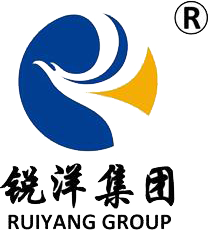
Untangling the Difference Between Cables and Fiber Optics
2025-09-09 16:26Our modern world runs on a hidden network of lines buried underground and tucked inside walls, powering everything from the internet to our home appliances. We often just call them "wires," but they are not all the same. The two most important players are electric cables and fiber optic cables.
Even though their names sound similar, they are worlds apart in how they work, what they're used for, and what they can do. The followings are the key differences.
1. The Core Principle: Electrons vs. Photons
This is the most fundamental difference. It's like comparing a horse-drawn carriage to a bullet train.
Electric Cables: The Flow of Electrons
Think of these as water pipes. Their core is a metal conductor (usually copper or aluminum). Electricity-a flow of electron-moves through this conductor to transmit power or information. They carry electrical signals. These signals get weaker (attenuate) over long distances and are susceptible to electromagnetic interference (e.g., static on your old TV near a microwave).
Fiber Optic Cables: The Speed of Light
Think of these as laser highways. Their core is made of incredibly thin strands of pure glass. They use a principle called "total internal reflection" to guide pulses of light through the glass, making them zip along with minimal resistance. They carry light signals. This makes them incredibly fast, allows signals to travel much farther without weakening, and makes them immune to electrical interference.
2. Inner Workings: Metal Wires vs. Glass Threads
Electric Cables: Made primarily of metal (like copper). This is a great conductor but is relatively heavy, and the raw material is costly.
Fiber Optic Cables: The core is glass fiber. It doesn't conduct electricity, is much lighter, and its raw material (silica/sand) is abundant.
3. Head-to-Head: Which One Performs Better?
A. Speed & Bandwidth:
Electric Cables: Like a two-lane country road. Speed is limited, and bandwidth (the amount of data they can carry) is constrained.
Fiber Optics: Like a 16-lane superhighway. Fiber is the clear winner. Its potential bandwidth is virtually limitless, forming the backbone of "gigabit internet" and 5G networks.
B. Distance:
Electric Cables: Electrical signals degrade over distance and need boosters (repeaters) to keep them strong, which can reduce quality.
Fiber Optics: Light signals degrade very little, allowing data to travel extremely long distances without significant loss of strength or quality.
C. Interference:
Electric Cables: Susceptible to interference. Thunderstorms, power lines, and other cables can create electromagnetic noise that disrupts the signal.
Fiber Optics: Highly immune to interference. Since light isn't affected by electromagnetism, fiber can be run right next to major power lines without any issues, making it more reliable.
D. Security:
Electric Cables: Can be tapped. It's possible (though not easy) to eavesdrop on data by detecting the electromagnetic fields around a cable.
Fiber Optics: Much more secure. Any attempt to tap into the cable disrupts the light transmission, which can be instantly detected, making it ideal for secure communications.
E. Cost & Maintenance:
Electric Cables: The raw material (copper) is expensive, but installing and terminating the cables is relatively simple and requires less specialized equipment.
Fiber Optics: The cable itself is now cost-competitive, but splicing and terminating fibers requires highly trained technicians and expensive, precision equipment.
4. Where You'll Find Them: A Division of Labor
A. The Domain of Electric Cables:
Power Transmission: The lines on power poles and the wiring in your walls are electrical cables, delivering energy.
Short-Distance, Lower-Bandwidth Data: Ethernet cables (Cat5/6/7) in your home, older coaxial cable TV lines, and telephone wires.
B. The Domain of Fiber Optic Cables:
Internet Backbone: The "information superhighways" that connect cities, countries, and continents.
Fiber-to-the-Home (FTTH): The fiber broadband that brings high-speed internet and IPTV directly to your house.
5G Networks: Connecting the countless cell towers that make up 5G networks.
Data Centers: Moving massive amounts of data between servers at lightning speed.
Together, they are like the different roads in a transportation network: electric cables are the reliable local streets and power grids, while fiber optics are the high-speed information freeways. As technology advances, fiber is reaching further into our homes and devices, promising an even more connected future.
